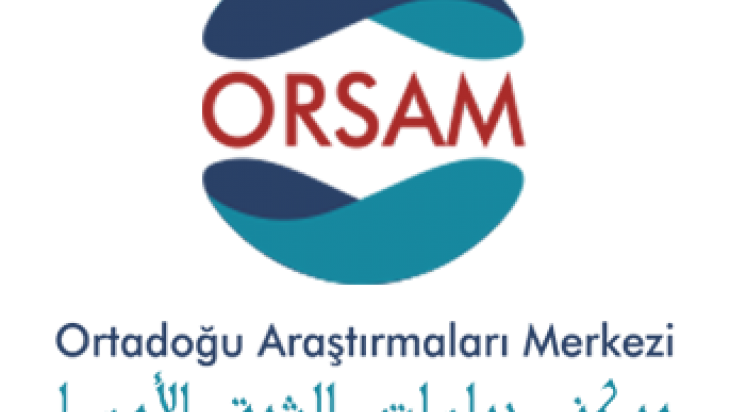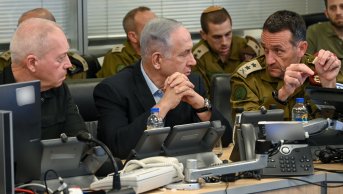Mongolian Presidential Election: Analysis (III)

With the result of the presidential election, Mongolian politics certainly resembles a strong domination by a single party. The Democratic Party (DP) now controls the presidency prime ministry and parliament - through being the largest part of the coalition. Furthermore, they also control the Mayoralty of the capital city Ulaanbaatar, henceforth all the most important and visible political posts are held by the DP. In any democracy, however benevolent or successful a political party in government might be, it is vital for a credible opposition to exist. At the moment the Mongolian People’s Party (MPP) seems to be fulfilling that mission, though it is far from being the leading political force in the country.
Mongolia desperately needs to have convincing opposing voices to correct the government when it makes miscalculations, as it surely will given all democratic governments some time or another inevitably do. The lack of a respectable opposition would please the DP in the short term but certainly in the long term it would be highly detrimental to both the party and the country.
The strength of the DP in terms of votes gained at the presidential election can be seen in the following map and table. The map below marks the regions and districts of the capital city won by Elbegdorj (blue), Bat-Erdene (red). The darker shades represent a majority (more than half), whereas the lighter shades represent pluralities.
Voting Breakdown by Region
| Elbegdorj DP | Bat-Erdene MPP | Udval MPRP | ||||
| Mongolian Regions | ||||||
| Arkhangai | 15,688 | 44.13% | 14,535 | 40.88% | 4,615 | 12.98% |
| Bayan-Olgii | 18,839 | 53.34% | 13,297 | 37.65% | 2,240 | 6.34% |
| Bayankhongor | 16,134 | 48.37% | 14,725 | 44.15% | 1,986 | 5.95% |
| Bulgan | 10,023 | 40.03% | 12,075 | 48.23% | 2,577 | 10.29% |
| Govi-Altai | 9,731 | 41.57% | 11,218 | 47.92% | 2,199 | 9.39% |
| Dornogovi | 9,842 | 37.85% | 13,880 | 53.38% | 1,866 | 7.18% |
| Govisumber | 2,664 | 42.17% | 3,111 | 49.25% | 436 | 6.90% |
| Dornod | 16,098 | 53.06% | 11,798 | 38.89% | 1,886 | 6.22% |
| Dundgovi | 6,401 | 36.43% | 9,455 | 53.81% | 1,524 | 8.67% |
| Zavkhan | 15,530 | 49.24% | 14,728 | 46.69% | 960 | 3.04% |
| Ovorkhangai | 21,012 | 46.12% | 20,808 | 45.67% | 2,876 | 6.31% |
| Omnogovi | 11,502 | 45.93% | 11,181 | 44.64% | 2,179 | 8.70% |
| Sukhbaatar | 10,290 | 39.58% | 14,168 | 54.49% | 962 | 3.70% |
| Selenge | 20,377 | 47.15% | 17,900 | 41.42% | 4,233 | 9.79% |
| Tov | 14,848 | 39.39% | 19,165 | 50.84% | 2,971 | 7.88% |
| Uvs | 15,402 | 46.17% | 15,299 | 45.87% | 2,066 | 6.19% |
| Khovd | 20,144 | 61.17% | 10,562 | 32.08% | 1,765 | 5.36% |
| Khovsgol | 27,056 | 52.28% | 20,827 | 40.24% | 3,106 | 6.00% |
| Khentii | 10,156 | 33.37% | 19,019 | 62.50% | 776 | 2.55% |
| Darkhan-Uul | 20,474 | 50.02% | 17,248 | 42.14% | 2,785 | 6.80% |
| Orkhon | 22,084 | 51.50% | 16,274 | 37.95% | 4,092 | 9.54% |
| City of Ulaanbaatar | ||||||
| Khan-Uul | 31,870 | 54.23% | 22,883 | 38.94% | 3,413 | 5.81% |
| Baganuur | 5,685 | 46.69% | 5,880 | 48.29% | 475 | 3.90% |
| Bagakhangai | 791 | 45.07% | 894 | 50.94% | 53 | 3.02% |
| Bayanzurkh | 70,763 | 55.01% | 49,777 | 38.70% | 6,822 | 5.30% |
| Nalaikh | 7,559 | 50.04% | 6,078 | 40.24% | 1,262 | 8.35% |
| Sukhbaatar | 33,366 | 54.91% | 23,681 | 38.97% | 3,157 | 5.20% |
| Chingeltei | 38,614 | 53.73% | 28,130 | 39.14% | 4,318 | 6.10% |
| Bayangol | 49,903 | 57.08% | 32,158 | 36.78% | 4,702 | 5.38% |
| Songino Khairkhan | 67,209 | 53.86% | 48,343 | 38.74% | 8,079 | 6.47% |
| Overseas | 2,739 | 64.57% | 1,283 | 30.25% | 182 | 4.29% |
| National Total | 622,794 | 50.23% | 520,380 | 41.97% | 80,563 | 6.50% |
From the table above one can see that Natsagiin Udval the candidate for the Mongolian People’s Revolutionary Party (MPRP) managed to receive 80,563 votes which translated as 6.5% of the national vote. She received her highest percentage of votes in the regions of Arkhangai, Bulgan and Selenge which indicates a regional pattern. All three regions lie to the north and west of the capital.
It was interesting to note that the region where she received the least amount of votes was in the home region of Bat-Erdene the MPP candidate. Udval could only manage to garner less than 3%, which is evidence of the fact that the non-DP vote was consolidated by the MPP in the Khentii region. Looking at the total amount of votes Udval received, it is noticeable that 40% came from the capital city: 32,281 votes. Therefore, from the whole of Mongolia only 6 out of 10 votes came from outside of the capital city.
As for Badmaanyambuugiin Bat-Erdene, he naturally won 62.5% of the vote in his home region, which was the highest any candidate received in any region. Furthermore, looking at the results it is clear to see that he was the popular choice of the south of the country, scoring well in the regions of Sukhbaatar and Dundgovi. Similar to Udval, he also received 42% of his total votes from the capital city: 217,824 of 520,380.
The incumbent performed very well in the capital city which has always been a stronghold for the DP. In fact their candidate was elected Mayor of the city last year as well as holding onto 26 of the 45 city council seats. In the end Elbegdorj secured 305,760 votes in Ulaanbaatar. The high turnout in the capital city was welcome news for the DP which meant that of all the votes cast in the capital, their candidate received more than half: 55%.
Furthermore, the capital city accounted for nearly half of all the votes he received (49%) in total, which meant that of his entire national vote, almost one of every two came from Ulaanbaatar. Having performed admirably in the city Elbegdorj also did extremely well in the regions, especially those in the west such as Khovd (his home region); Bayan-Olgi and Khuvsgul, winning 14 in total.
Evaluating the results an interesting fact emerges. Elbegdorj won the election by a margin of just over 102,000 votes. The difference between the winner and the runner-up was practically the margin of victory in the capital city; as Elbegdorj received 87,000 more votes than Bat-Erdene.
According to Dierkes who has analysed the voting result, if one puts together “all the non-Ulaanbaatar districts minus the diaspora, respective shares are 47.36% for Elbegdorj, 45.4% for Bat-Erdene, 7.25% for Udval. Using this same definition of country vs. city, 54.23% of all votes were cast outside of Ulaanbaatar”.(1) This incidentally means that the capital city accounted for more than 45% of the national vote, which once more underscores the vitality of Ulaanbaatar in both electoral and political terms.
(1) Julian Dierkes, ‘Vote Shares by Regions | Mongolia Focus’, accessed on 27 June 2013, http://blogs.ubc.ca/mongolia/2013/vote-shares-by-regions/


